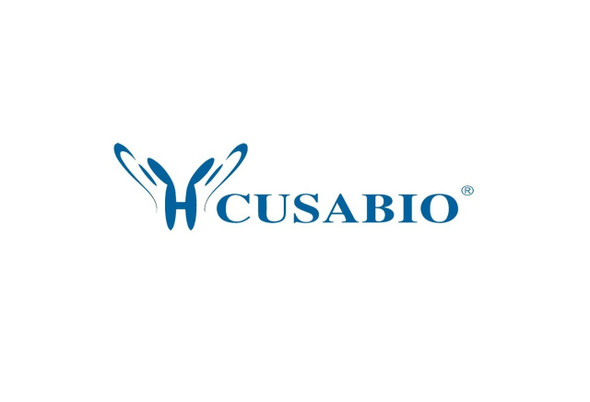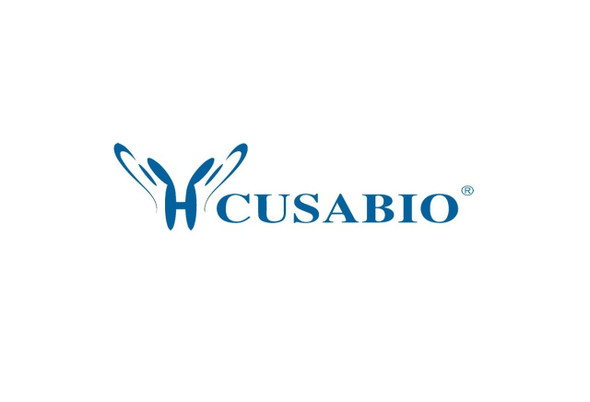Cusabio Human Recombinants
Recombinant Human Regulator of G-protein signaling 20 (RGS20) | CSB-EP019652HU
- SKU:
- CSB-EP019652HU
- Availability:
- 13 - 23 Working Days
Description
Recombinant Human Regulator of G-protein signaling 20 (RGS20) | CSB-EP019652HU | Cusabio
Alternative Name(s): Gz-selective GTPase-activating protein
Gene Names: RGS20
Research Areas: Signal Transduction
Organism: Homo sapiens (Human)
AA Sequence: EPAGASSPAGRVDGGLQMGSERMEMRKRQMPAAQDTPGAAPGQPGAGSRGSNACCFCWCCCCSCSCLTVRNQEDQRPTIASHELRADLPTWEESPAPTLEEVNAWAQSFDKLMVTPAGRNAFREFLRTEFSEENMLFWMACEELKKEANKNIIEEKARIIYEDYISILSPKEVSLDSRVREVINRNMVEPSQHIFDDAQLQIYTLMHRDSYPRFMNSAVYKDLLQSLSEKSIEA
Source: E.coli
Tag Info: N-terminal GST-tagged
Expression Region: 1-234aa
Sequence Info: Full Length of BC015614
MW: 53.4 kDa
Purity: Greater than 90% as determined by SDS-PAGE.
Relevance: Inhibits signal transduction by increasing the GTPase activity of G protein alpha subunits thereby driving them into their inactive GDP-bound form. Binds selectively to G(z)-alpha and G(alpha)-i2 subunits, accelerates their GTPase activity and regulates their signaling activities. The G(z)-alpha activity is inhibited by the phosphorylation and palmitoylation of the G-protein. Negatively regulates mu-opioid receptor-mediated activation of the G-proteins
Reference: "RGSZ1, a Gz-selective RGS protein in brain. Structure, membrane association, regulation by Galphaz phosphorylation, and relationship to a Gz GTPase-activating protein subfamily." Wang J., Ducret A., Tu Y., Kozasa T., Aebersold R., Ross E.M. J. Biol. Chem. 273:26014-26025(1998)
Storage: The shelf life is related to many factors, storage state, buffer ingredients, storage temperature and the stability of the protein itself. Generally, the shelf life of liquid form is 6 months at -20?/-80?. The shelf life of lyophilized form is 12 months at -20?/-80?.
Notes: Repeated freezing and thawing is not recommended. Store working aliquots at 4? for up to one week.
Function: Inhibits signal transduction by increasing the GTPase activity of G protein alpha subunits thereby driving them into their inactive GDP-bound form. Binds selectively to G(z)-alpha and G(alpha)-i2 subunits, accelerates their GTPase activity and regulates their signaling activities. The G(z)-alpha activity is inhibited by the phosphorylation and palmitoylation of the G-protein. Negatively regulates mu-opioid receptor-mediated activation of the G-proteins (By similarity).
Involvement in disease:
Subcellular Location: Membrane, Lipid-anchor, Nucleus, Cytoplasm
Protein Families:
Tissue Specificity: Isoform 5 is expressed in brain at high levels in the caudate nucleus and temporal lobe.
Paythway:
Form: Liquid or Lyophilized powder
Buffer: If the delivery form is liquid, the default storage buffer is Tris/PBS-based buffer, 5%-50% glycerol. If the delivery form is lyophilized powder, the buffer before lyophilization is Tris/PBS-based buffer, 6% Trehalose, pH 8.0.
Reconstitution: We recommend that this vial be briefly centrifuged prior to opening to bring the contents to the bottom. Please reconstitute protein in deionized sterile water to a concentration of 0.1-1.0 mg/mL.We recommend to add 5-50% of glycerol (final concentration) and aliquot for long-term storage at -20?/-80?. Our default final concentration of glycerol is 50%. Customers could use it as reference.
Uniprot ID: O76081
HGNC Database Link: HGNC
UniGene Database Link: UniGene
KEGG Database Link: KEGG
STRING Database Link: STRING
OMIM Database Link: OMIM










